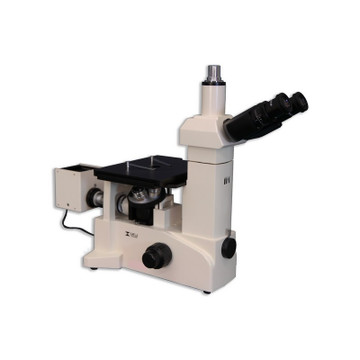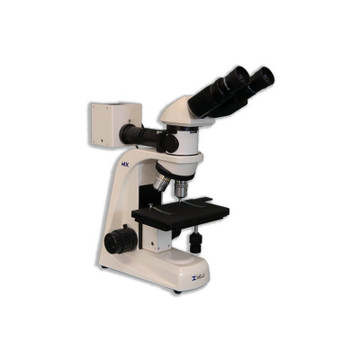
What is a Darkfield Microscope
A darkfield microscope uses a darkfield condenser to produce the background or the field of a specimen to appear dark while using a specialized illumination technique to make the subject itself appear bright.
Darkfield Microscope Uses
Each type of microscope has subjects that it’s better at viewing, which can customize the uses quite a bit. A few of the more popular darkfield microscope uses include situations where the specimens are live and using a stain for contrast in a brightfield situation would kill the sample.
There are many other situations where darkfield microscopy is used, it can be found in the fields of biology, gemology, metallurgical sciences, and industry. These microscopes are great for getting a good look at the following:
- Blood cells
- Tissue sections
- Bacteria
- Yeast
- Algae
- Pond water
- Invertebrates
- Soil infusions
- Precious stones
- Metal fractures
In general, darkfield microscopy is a good option for suspension samples, liquids, and specimens with a low contrast. It’s also especially useful when viewing live organisms in water samples.
It should be noted that darkfield microscopy has some limitations, including the fact that exposure to intense lighting can be hazardous to some specimens. Darkfield can also be less beneficial when working with thick specimens, and it can make it more difficult to identify internal details.
What to Know When Buying a Darkfield Microscope
If your needs are such that having a dedicated darkfield microscope is beneficial, there are a few things you should know when buying a darkfield microscope.
First of all, would a brightfield microscope/darkfield microscope be the best for your needs? There are high-end microscopes that are designed to work equally well in brightfield and darkfield. These add versatility to your line-up and can offer cost savings.
Would a darkfield kit paired with an existing brightfield microscope work? Some laboratories find that kits that are specialized to convert brightfield microscopes into darkfield microscopes are all that they need to get double-duty function from their existing equipment. This is achieved with a darkfield condenser or darkfield slider that goes in a brightfield condenser.
Beyond that, you will want to apply general microscope buying guidelines to your purchase decision. Consider how you will be using the microscope, who will be using it, and what magnification and resolution are needed. And one of the most important considerations is who you purchase your microscope from. A reputable dealer is essential because you’ll want to be sure you’re getting what you paid for, that there’s a warranty to back up your purchase, and that the dealer is knowledgeable so you can return with questions when they arise.
Brightfield vs Darkfield Microscope
Brightfield microscopes use a light to illuminate a specimen. The light is gathered by the microscope’s condenser, transmitted through the specimen, and then passes through the microscope’s objective lens. The contrast in the sample is generated by the absorption of light. The result is a bright background.
Darkfield microscopes feature a specialized condensing system, which includes a darkfield condenser or a darkfield slider that fits into the brightfield condenser. This component effectively blocks direct condenser rays from entering the microscope's objective lens. Instead, the light is scattered by the subject through reflection, refraction, or diffraction and then transmitted to the objective lens. This gives the subject a brightness and the background appears dark.
Converting a Brightfield Microscope into a Darkfield Microscope
One thing that’s great about darkfield microscopy is that you can convert a brightfield microscope so you can take advantage of darkfield illumination. One way to do this, if your microscope is able, is to switch the current condenser with a darkfield condenser.
Darkfield vs Phase Contrast Microscope
In the darkfield microscope, as mentioned above, the light goes through the specimen before heading to the objective lens. This leads to impressive magnification. In a phase contrast microscope, part of the light beam is modified by the specimen, and part of it Is not. This is the contrast, between light that has gone through the specimen and light that hasn’t. When the lights have this contrast, you get the interference of light rays that produce a high contrast allowing for illumination of transparent biological samples.
Custom Quotations on Darkfield Microscopes
Let our experts create a custom quote just for you with our best pricing and terms on darkfield microscopes. Simply tell us your requirements, and we'll do the rest.
If you need product advice, technical support, or to enquire about quantity discounts, feel free to contact us by email or call us at (877) 877-7274.
New York Microscope Company is the only microscope company to offer a Free Service Protection Guarantee with the purchase of every compound microscope. Visit our Free Service Protection page for more details.















